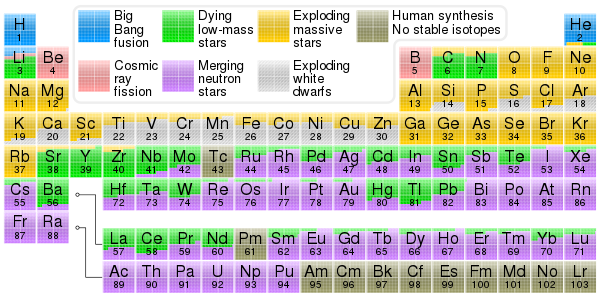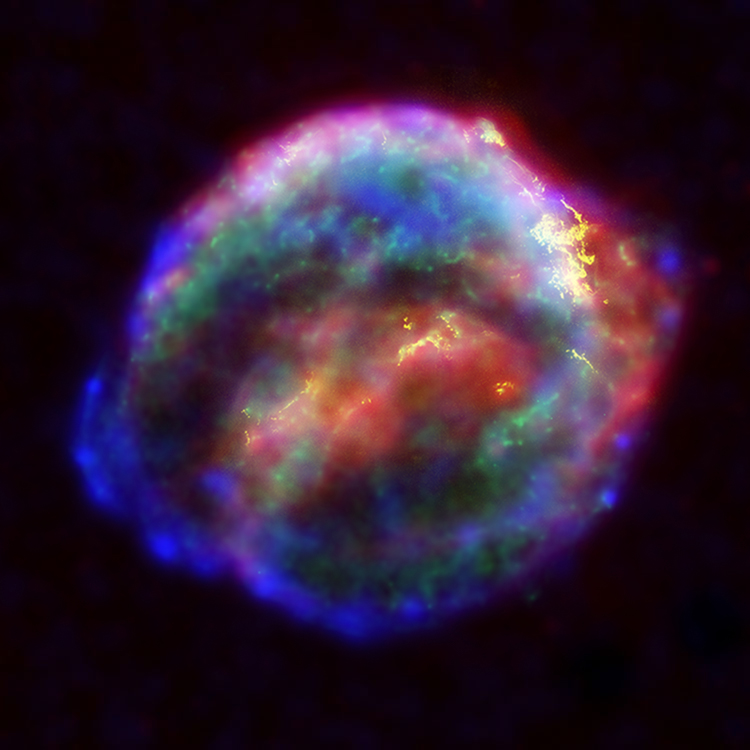In “What is a supernova”, we touched upon the ejection of material from a star in its supernova phase. Let’s consider what this material is and, as always, how you can observe it!
The material that forms the supernova remnant (SNR) is ejected from the star at a velocity of up to 30,000 km/s, 10% of the speed of light. The shock wave associated with this explosion has two notable consequences: on one hand it heats the Interstellar Medium up, meaning this environment becomes more dynamic, and it also accelerates particles to extremely high speeds, relativistic speeds, so that they become cosmic rays. These are responsible for chemical reactions on Earth, such as atmospheric processes or the production of Carbon-14, which is an isotope that can be used to date ancient organic remains. An isotope of an element has the same number of protons, but a different number of neutrons in the nucleus.

Nucleosynthesis
Another reason why SNRs are something we ought to be grateful for is that they contain the heavy elements produced in the ultimate burning phases of the star. As you can see in the table above (white, yellow and green colour codes), dying stars can produce elements beyond the iron peak we discussed in “What is a Supernova”. In turn a lot of these elements (Oxygen, Iron …) are part of the biochemistry of life on Earth; in short, without supernovae, life wouldn’t have been able to develop. As well these elements will be part of the stars forming in that interstellar medium, giving them different spectra than stars from previous generations.
So, as these elements are propagated and integrated into the interstellar medium, what is it that can be observed?

Kepler’s Supernova Remnant
Since the size of the SNR depends on the age of the supernova, what you can observe is quite various. Above you can see a composite image of Kepler’s Supernova Remnant, which is only a few centuries old and still in its free expansion stage. As a small exercise for you to become more familiar with the Telescope Live platform, you can compare it with the recently taken image of the Vela Supernova Remnant in the Telescope Live Gallery: there, the supernova occurred about 12 000 years ago so the matter will have had much more time to expand into the interstellar medium.
As SNRs are a type of object comparable to emission nebulae, they can be observed nicely with narrowband filters (H alpha, S III, O III). This catalogue’s summary listing will give you SNRs’ coordinates (Right Ascension and Declination); from the detailed listing you can learn more about your chosen target.
Happy browsing and we look forward to seeing the results of your supernova remnant observation! For any queries don’t hesitate to get in touch via email or through our social media channels!
--
Article author: Maurane Gisiger
Cover image:
Cygnus Loop, Ian Howarth
Images credits:
1. Prof. A.W. Peet
2. 2003/2004 Hubble Space Telescope, Spitzer Space Telescope and Chandra X-ray Observatory


Recommended Comments
There are no comments to display.